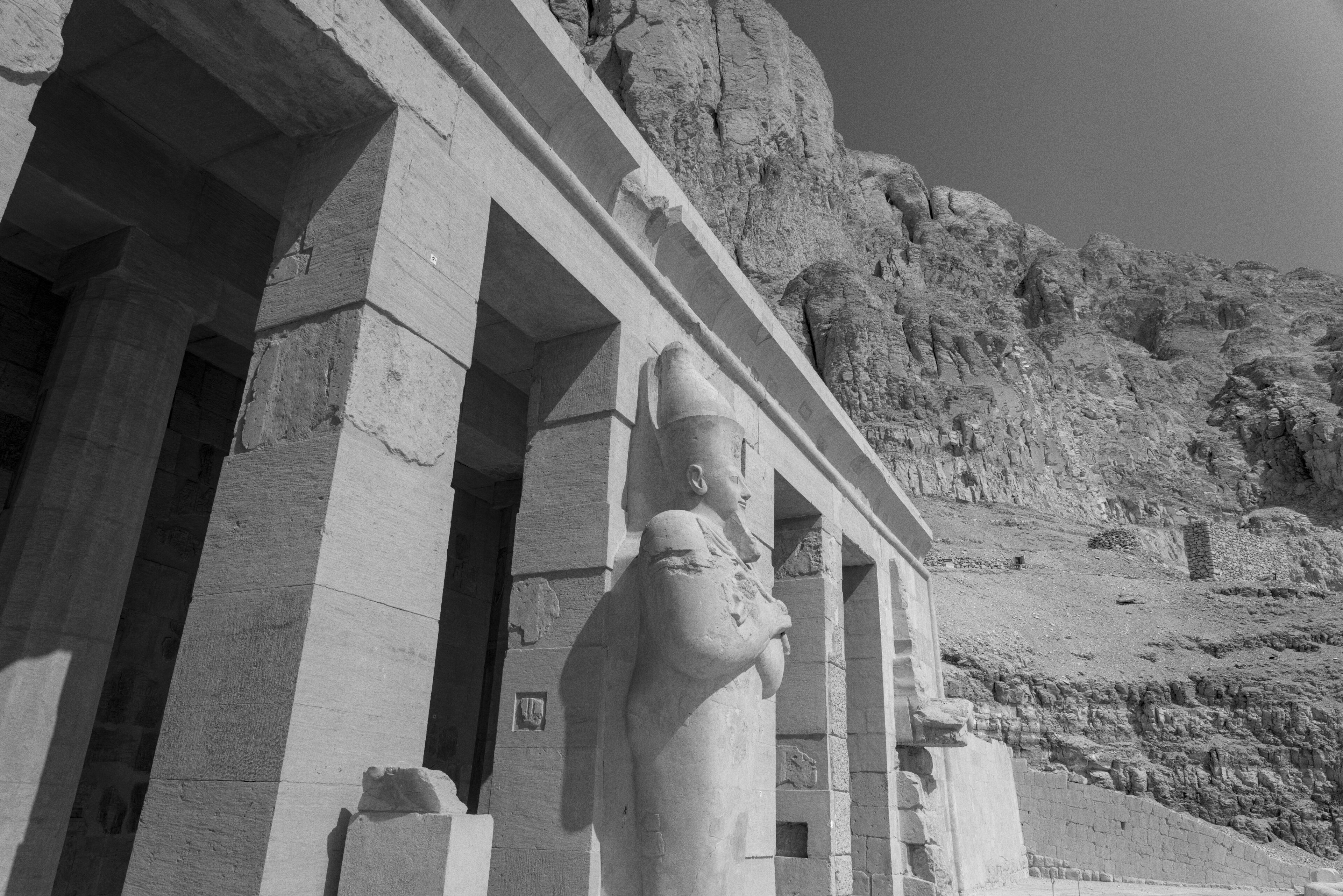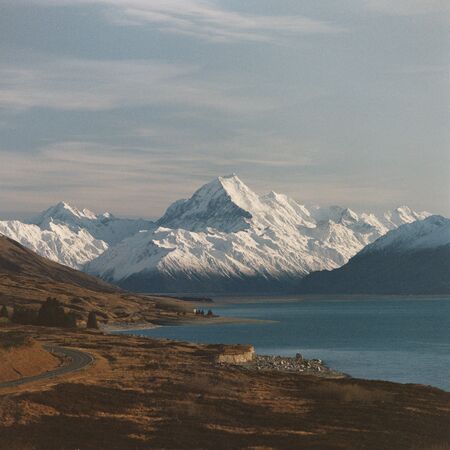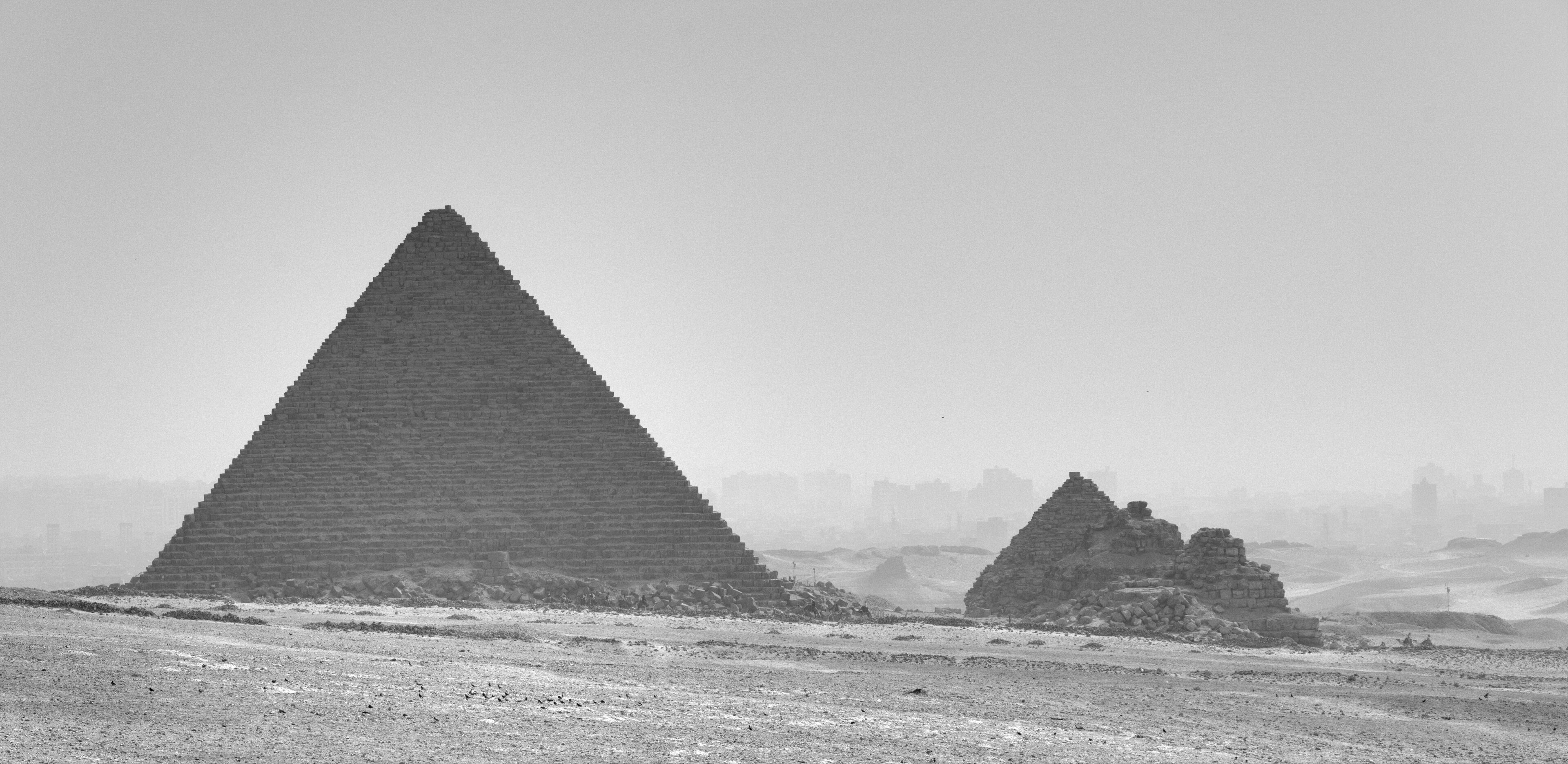
Once upon a time in Giza.
The Pyramids are difficult to photograph. You’re close enough to touch them and yet they’re so fucking big. Standing at the base and looking up the how did they make that? factor comes into play. The individual blocks themselves, made out of limestone, are the height of a tiktok influencer – make sure it’s my best angle. Up the road from the Great Pyramid is a spot dubbed Panorama Point which is nearby the spot where that photo of the three pyramids lined up in a row is taken from. Panorama Point generates half of Egypt’s GDP. It’s turned into a city where you can buy everything from a camel ride to a watermelon vape pen. The pyramids still make an impressive background, however the foreground of your frame is going to contain tour buses and stalls.
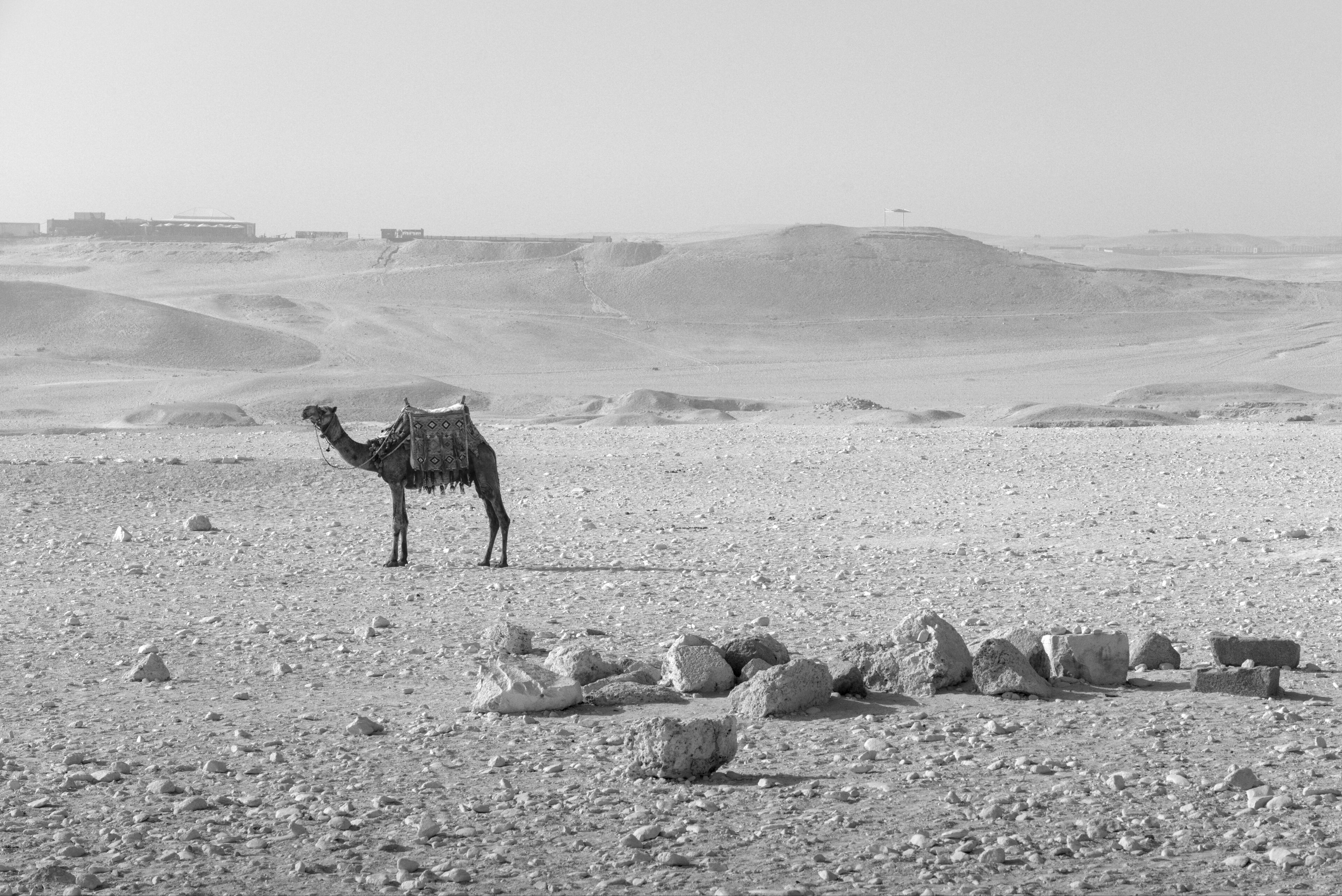
is this it?
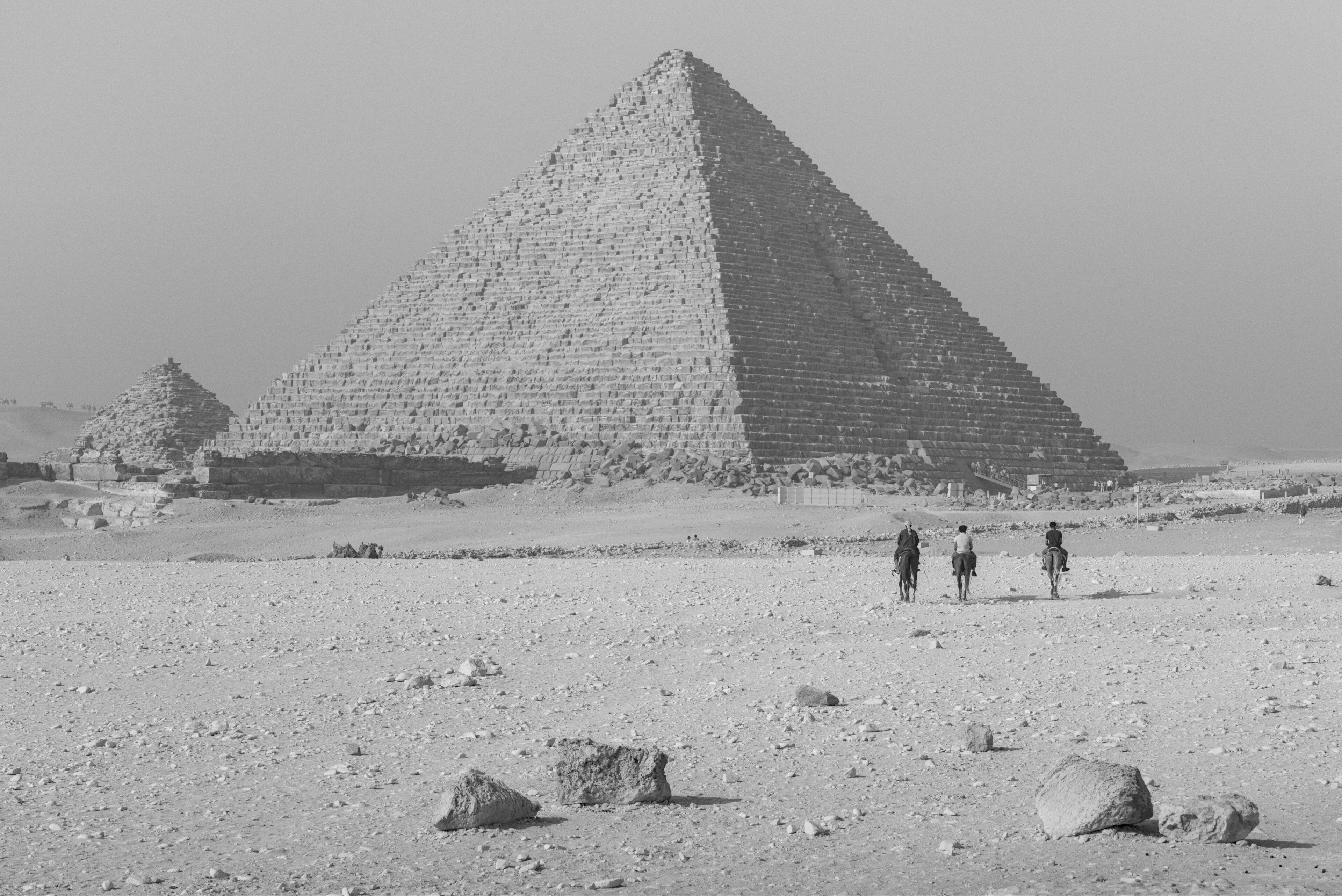
Pyramid of Menkaure
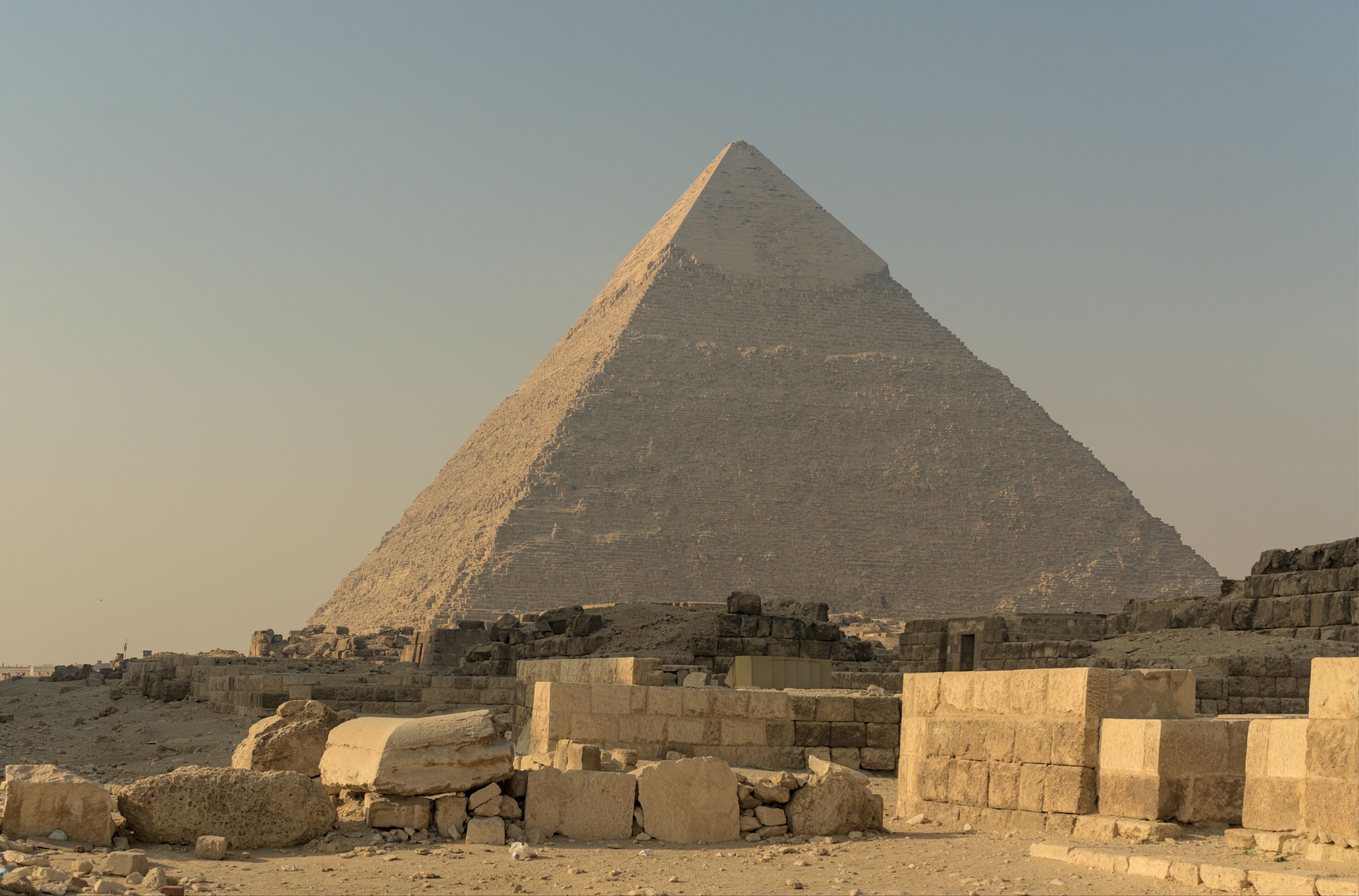
Pyramid of Khafre
I arrived in Cairo at 1PM but the sun was already casting an evening light. It was the Arrakis of the books. The air held weight – heat, smog, sand, dust, and spice. The effect this had on the city buildings was beautiful. Instead of the dark grime or grease pollution of other cities, here the atmosphere was a rusted bronze. This society-induced diffuse light made looking out the taxi window a cinematic experience.
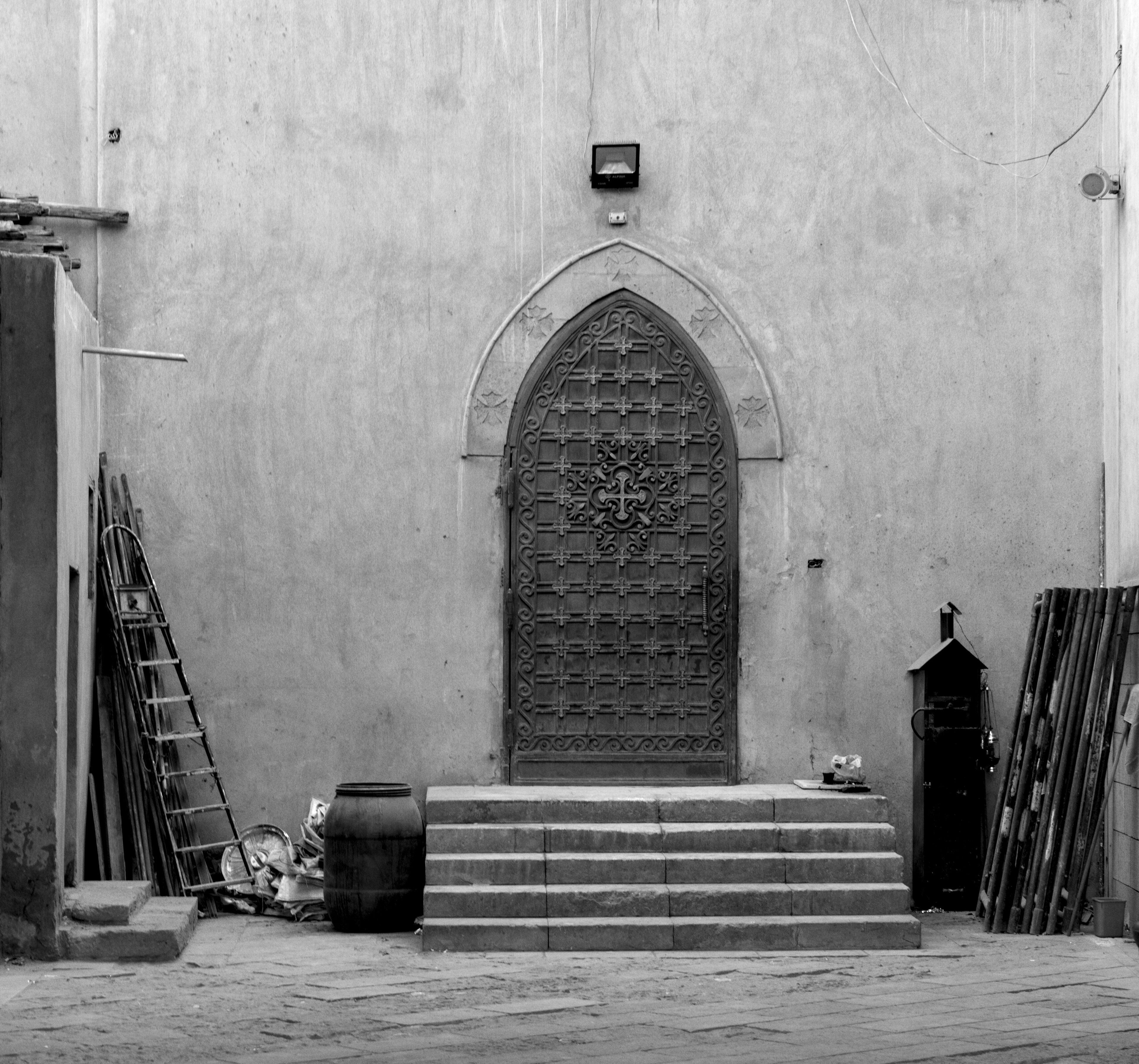
Coptic Entry
Coptic Cairo is like a historical island in the modern city. Surrounded by busy roads, apartments, and train lines, this site preserves Coptic history going back to the third century AD. This was my first foray into the city and I’d quickly learn to look for the white-uniformed Tourist Police. Armed with assault rifles and cigarettes, they’d glare me into every site I visited.
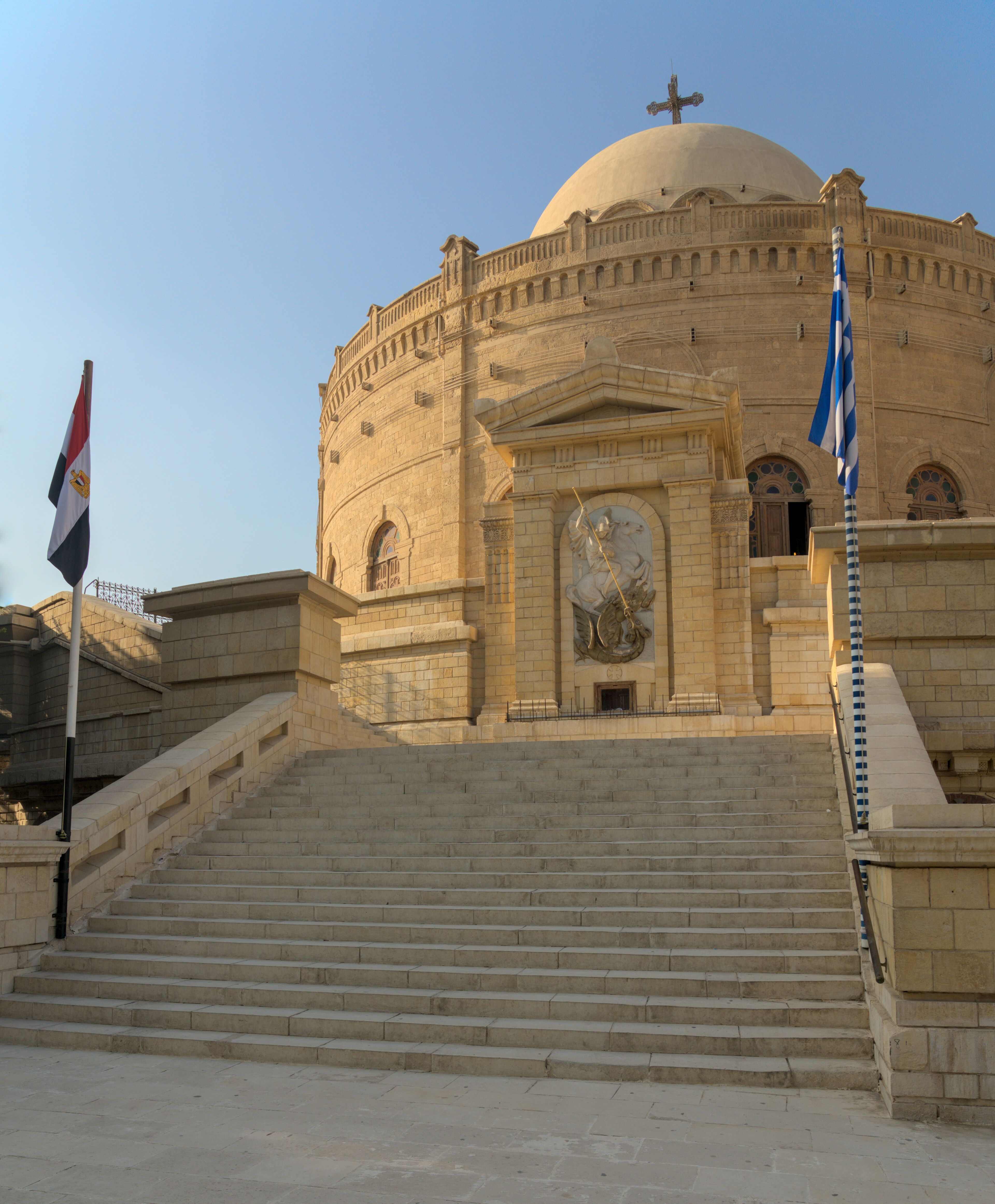
St George's Church
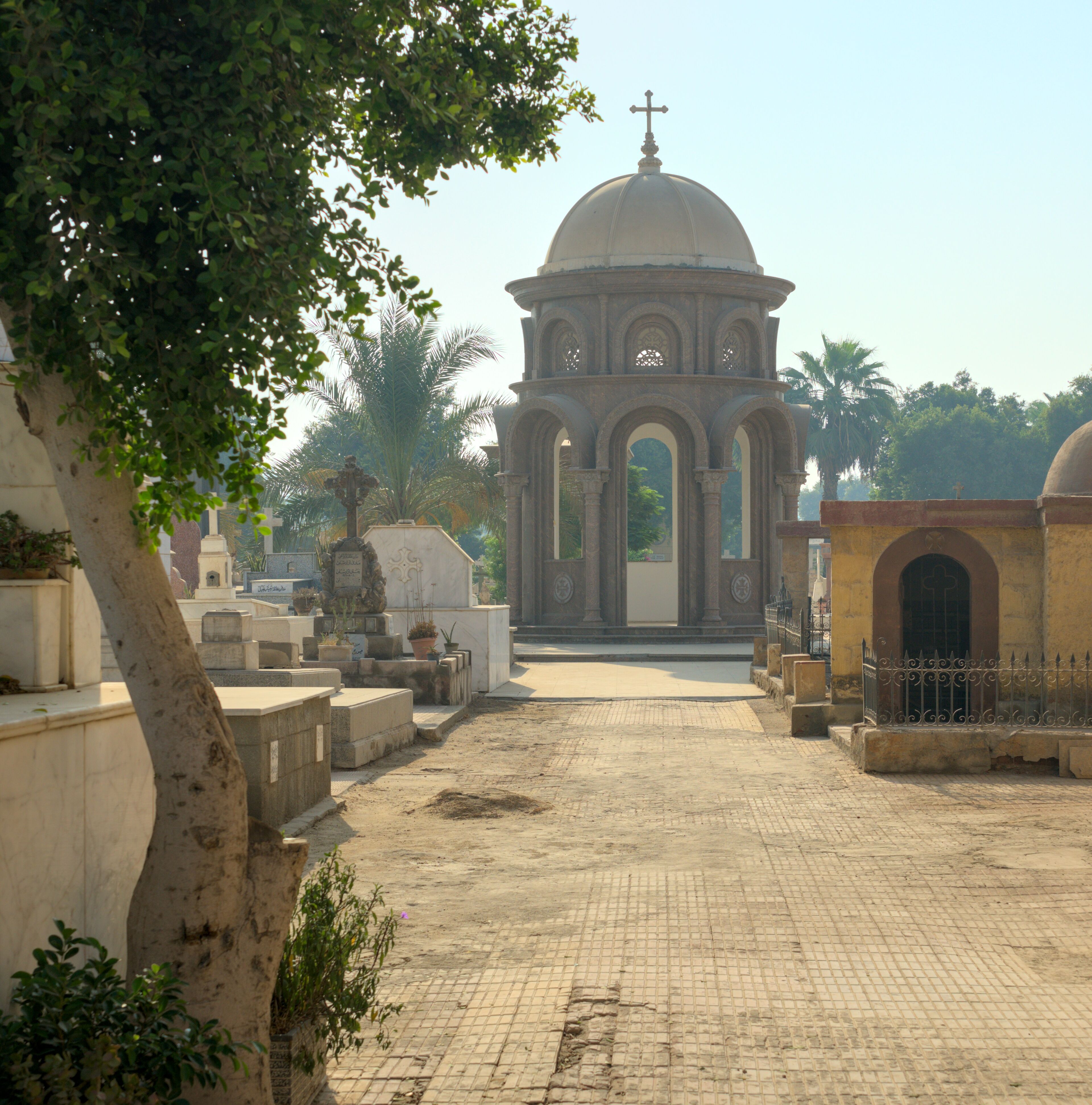
Coptic Cemetery
After walking around the Coptic area I wanted to get a feel for the neighbourhood. I crossed the train line and set out walking. I followed the flow of locals to a street market. Fruit and vegetable vendors, butchers, cigarettes, laughing children, fresh bread, solemn expressions, car horns, overladen grandmothers, piss, deflated footballs, cats in the sun, children walking to school, smoke, smiles, gaunt dogs, wide stares, kids introducing themselves.
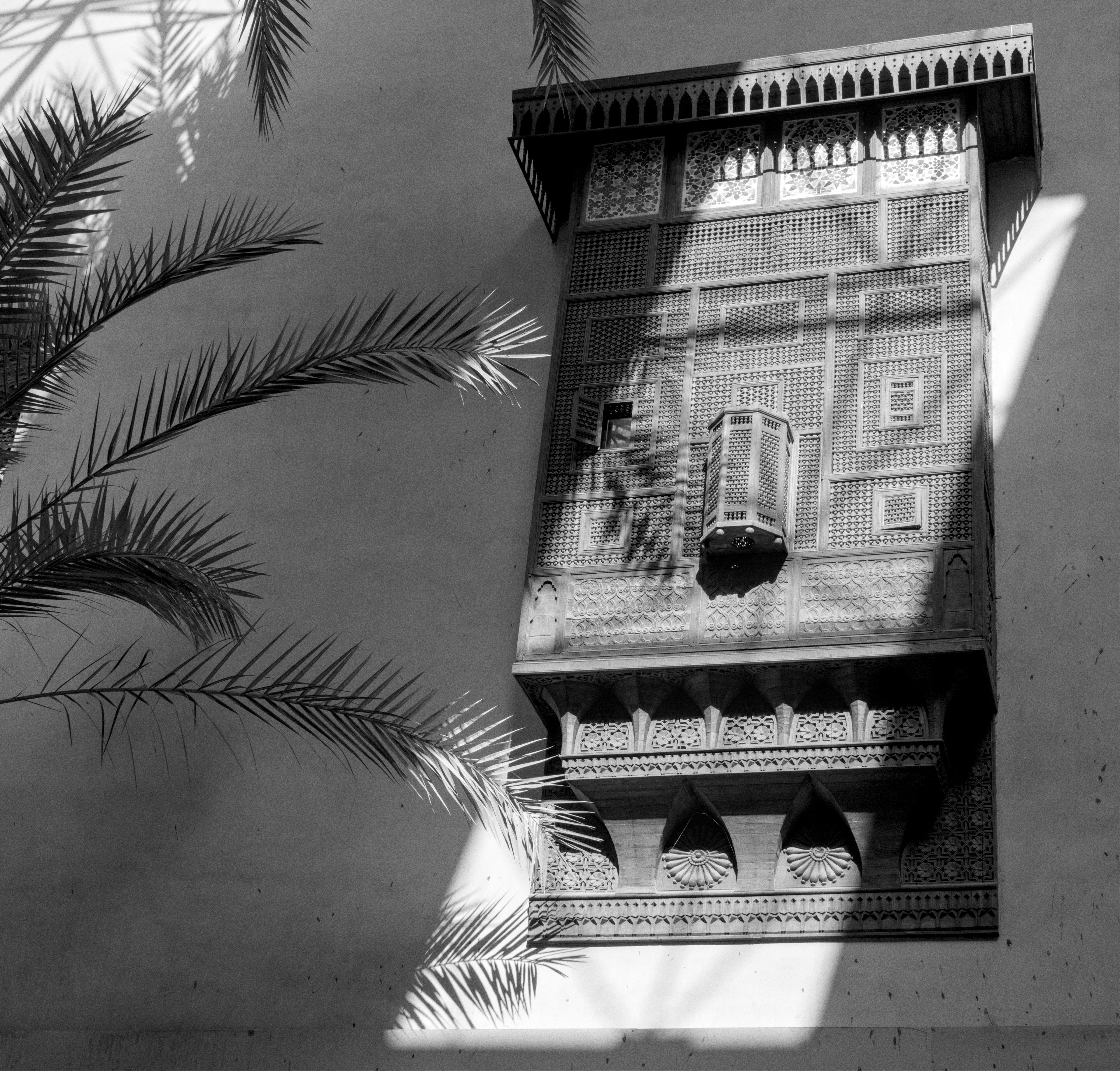
Outside
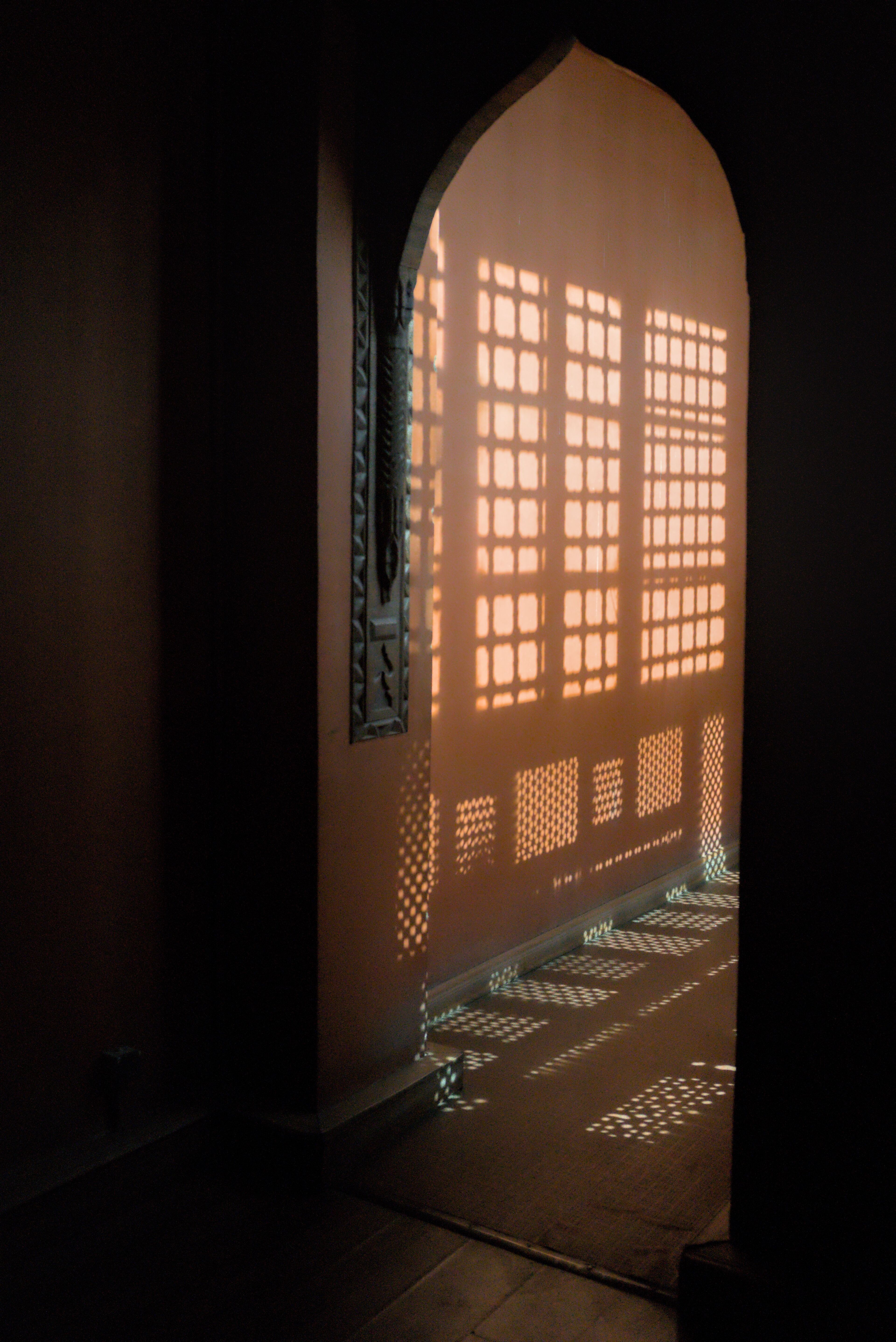
In
Cairo is unfinished. Apartment buildings of all classes have exposed girders, the occasional empty floor, and construction materials left on the roof. Tax is paid on completed buildings. This theme of eternal construction carried over to some of the ancient temple sites. The Karnak Temple site is so large with so much recovered (and yet to recover) material that they could go on constructing (aka restoring) new walls, temples, and statues for years. On balance, Egypt did this well. The Greek approach to ancient sites is to wrap the objects of interest in scaffolding, put a do not touch sign on it, and strategically place concrete mixers around the site so they end up in all of your pictures.
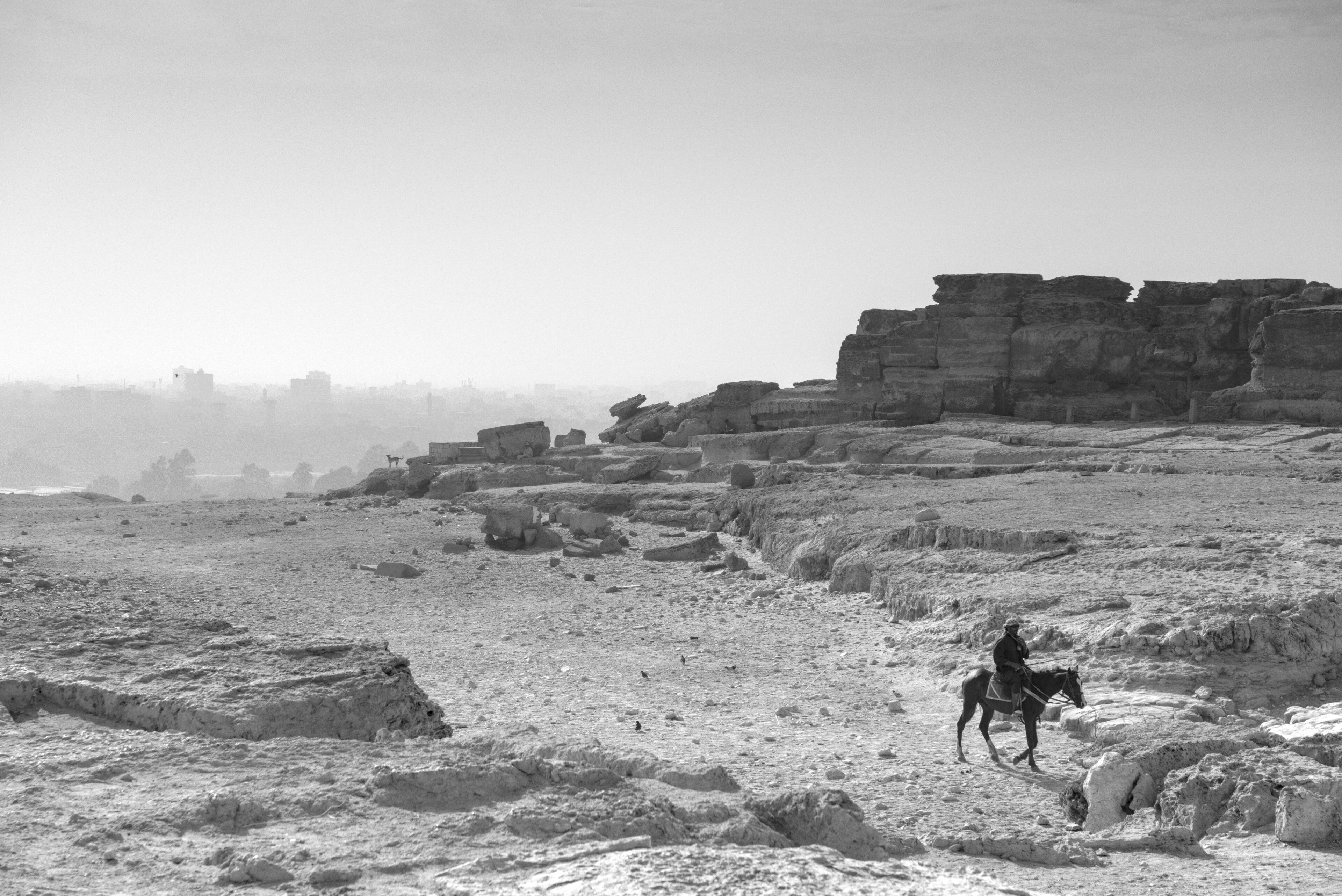
Edge of the Giza Pyramids site
The Egyptian hotel industry must employ more people than the state. Every American as-seen-in-las-vegas hotel chain, and equivalent European i-think-i-can-pronounce-that hotel has river-facing entities up and down the Nile. If you get uncomfortable when someone insists on taking your bag to your room, then these are the places for you. These dynastic institutions have their own quirks. There are more people employed at the metal detector than at reception. Of these, half must appear to be dozing off in order to lull a potential threat into a state of comfort. The blaring alarm and red flashing light welcomes you into the lobby.
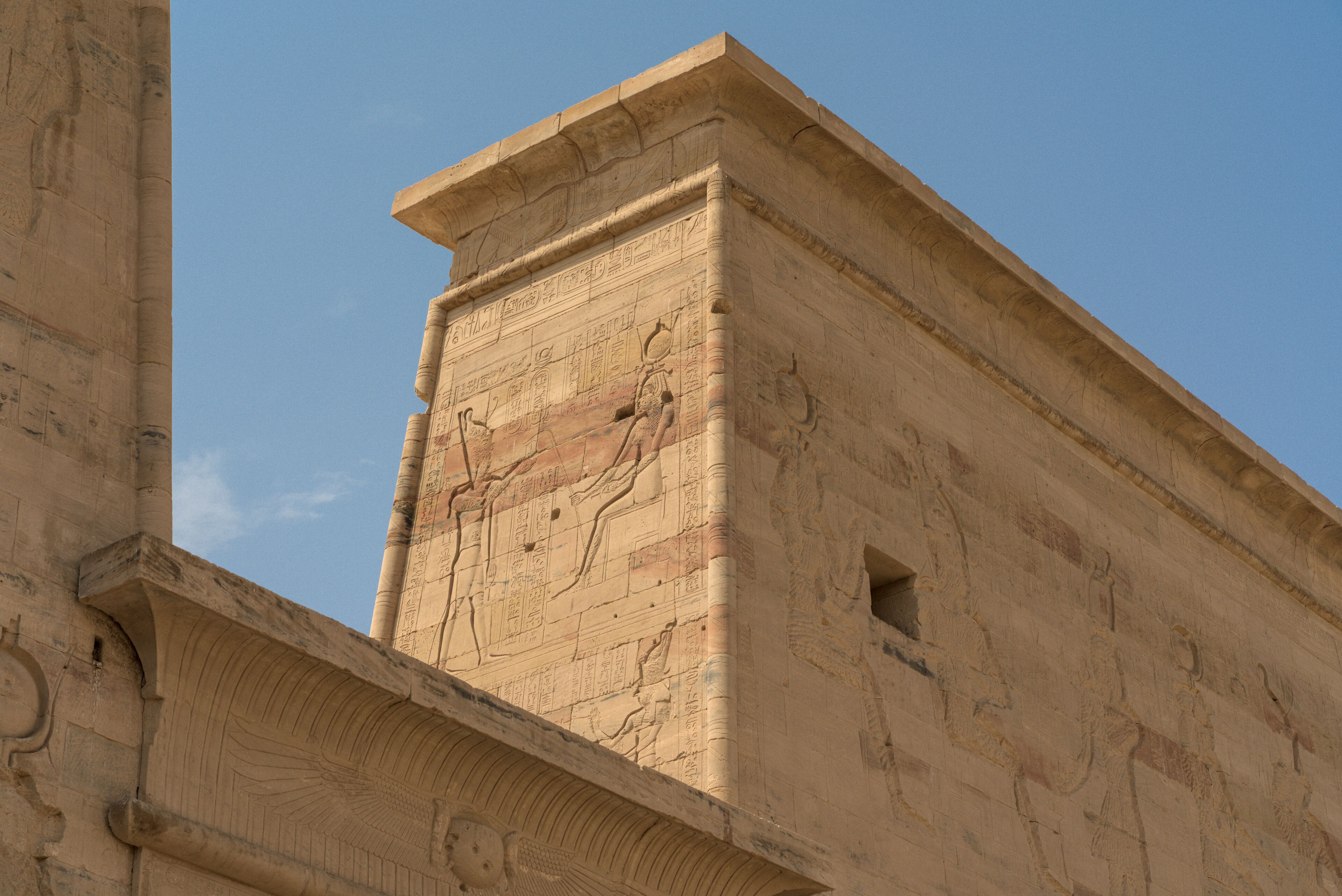
Philae Temple
Lobby music choice was spot on. No contemporary Spotify playlist, Nile FM bangers, or tunes a foreigner would guess are Egyptian or Arabic. In fact, every hotel, waiting room, and transport terminal played the exact same song on loop: a fifteen minute saxophone rendition of My Heart Will Go On by Celine Dion. She will have made enough royalties to build herself a tomb in Valley of the Queens. There was enough in-key improv that you forgot what song were listening to, only for the melody to return and you sit there staring into the dregs of that glass of Sinai claret.
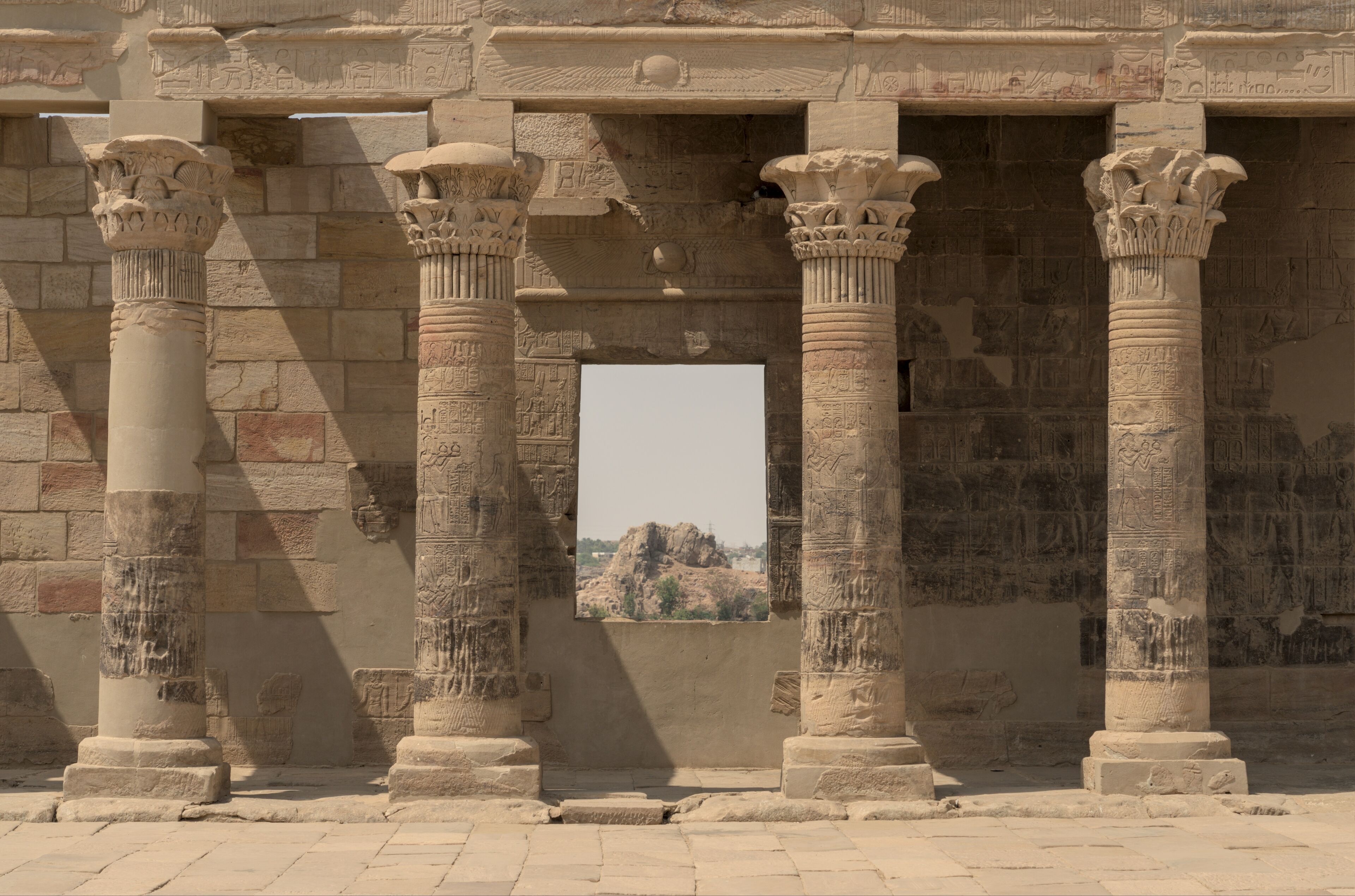
Philae Temple
In retrospect I think it was a mistake to stay exclusively in hotels. They were very comfortable, but on the whole too insular. While in them, from the end of the day through start of the next, I was anywhere but Egypt. This resulted in me not getting a lot of exposure to contemporary Egypt. I saw the ancient sites and tourism industry during the day, but not much beyond that. I write this now from an Airbnb in a neighbourhood in Rhodes while drinking a mirage-inducing cab sav listening to the neighbours yell at each other and snacking on souvlaki from shop down the street. I have no idea what the neighbours are saying, probably the same as anywhere. It’s dark now, I know they’ll be quiet soon, and tomorrow I’ll wake to the natural alarm clock of the kids getting ready for school routine. Contrast this to the hotel corporate slogans, environmental mission statements, and ice-bucket-challenge messaging. They tell you how to feel.
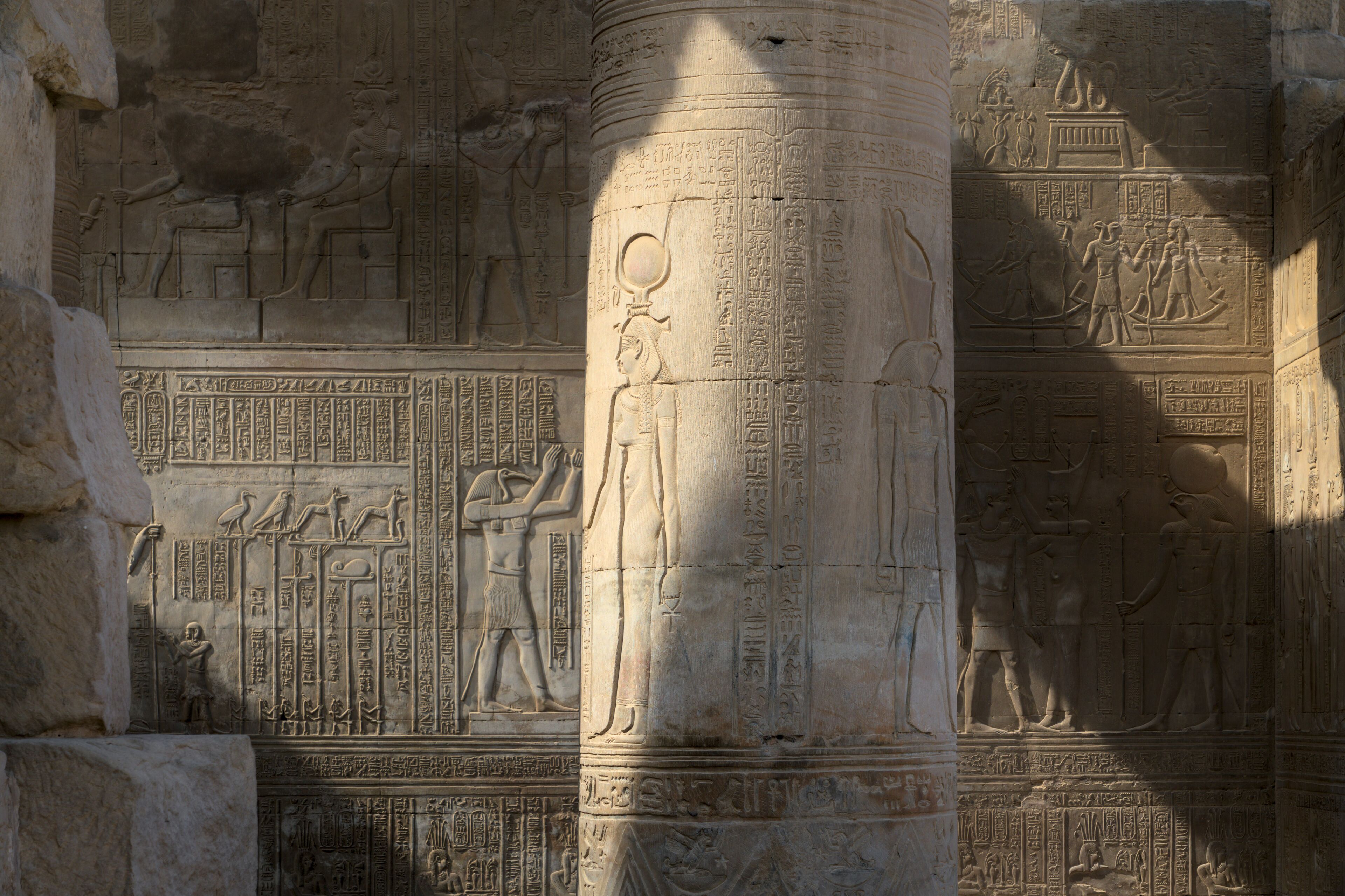
Kom Ombo Temple
Tourist sites have an army of men looking to earn an extra dollar. Vendors are ever-present, but there are also private individuals stalking the sites willing to guide you to the best spots to take photographs. This guiding consists of them running in front of you making welcoming gestures the spot you were already walking to before they became aware of you. When they arrive at the spot they ask for a tip, or (an actual value add) offer to take a photo of you on your phone. It’s annoying but harmless. Tourist Police are present and every site and ensure the guides don’t get too pushy.
When visiting Philae Temple I walked around the perimeter of the site; deserted locations often turn up interesting photos. I was snapping away in a remote and apparently empty corner when out of nowhere appears one of the Tourist Police. Clean white shirt and pants and a box of darts in his shirt pocket with one on the go in his mouth. Over his shoulder was a greasy metallic assault rifle – ready to repel any Hamas or Wagner PMC assault on this ancient temple. We talk in broken English and he offers to take my photograph. I know this trick from the usual grifters so I politely decline and get back to my photography. He says “no money, no money”, so I agree (for it was a good spot). You know what happens next. I pick the frame, hand him my phone, and he takes the photo. I reach to take it back but he’s walked away to another spot and is taking more photos of me. This repeats another five times until he looks at me, shifts the cigarette to the other side of his mouth, moves my phone to his left hand, rests it on the gun, and asks me for money.
Philae Temple was originally located on Philae Island. After the first Aswan Dam was constructed in 1902 the island became flooded and water was damaging the temple. In the 1970s the temple was pulled apart and moved to its current site on nearby Agilkia Island. The gods, lacking any modern physical currency, have yet to be moved.
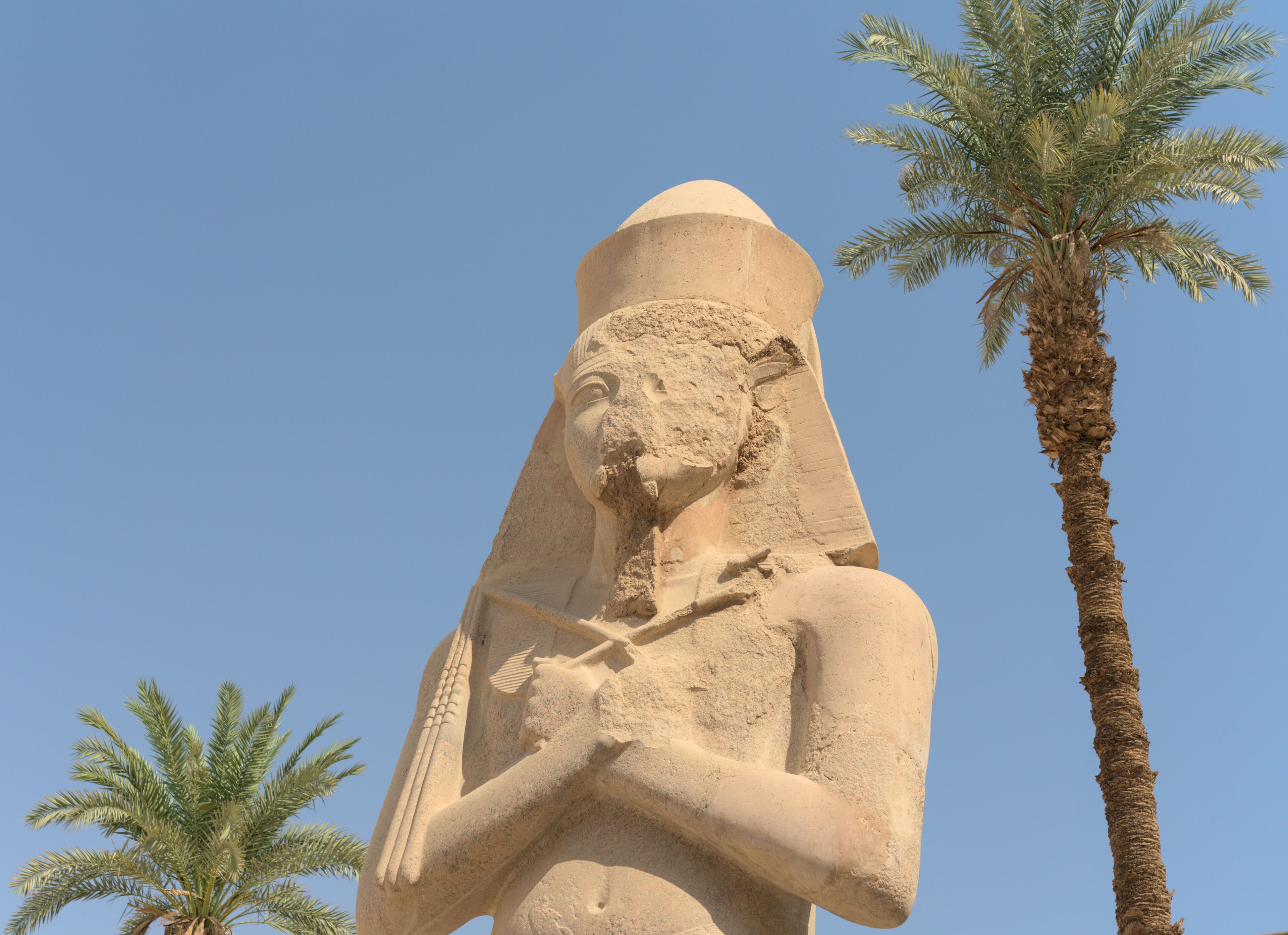
is this it?
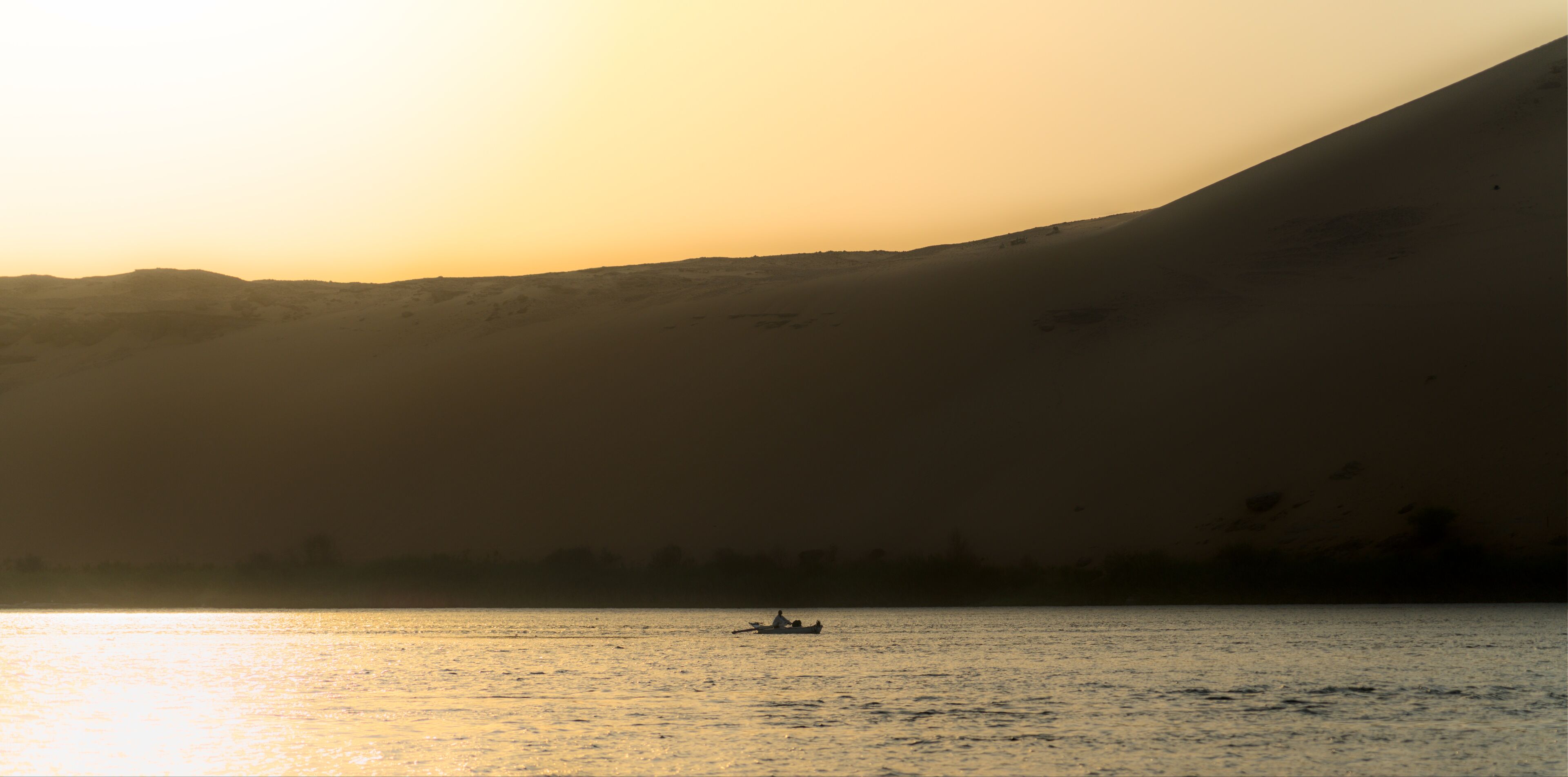
Nile
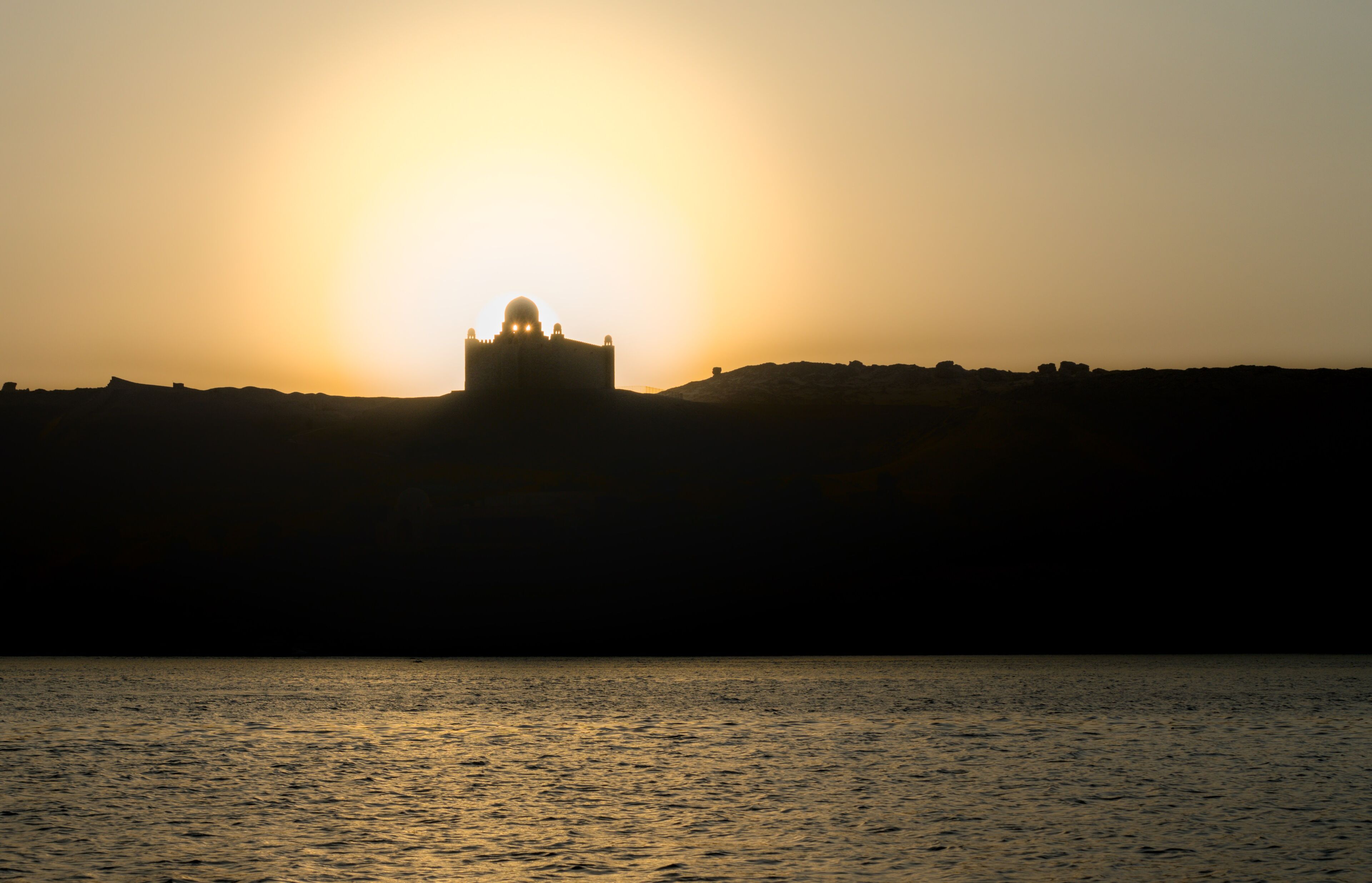
Aga Khan Mausoleum
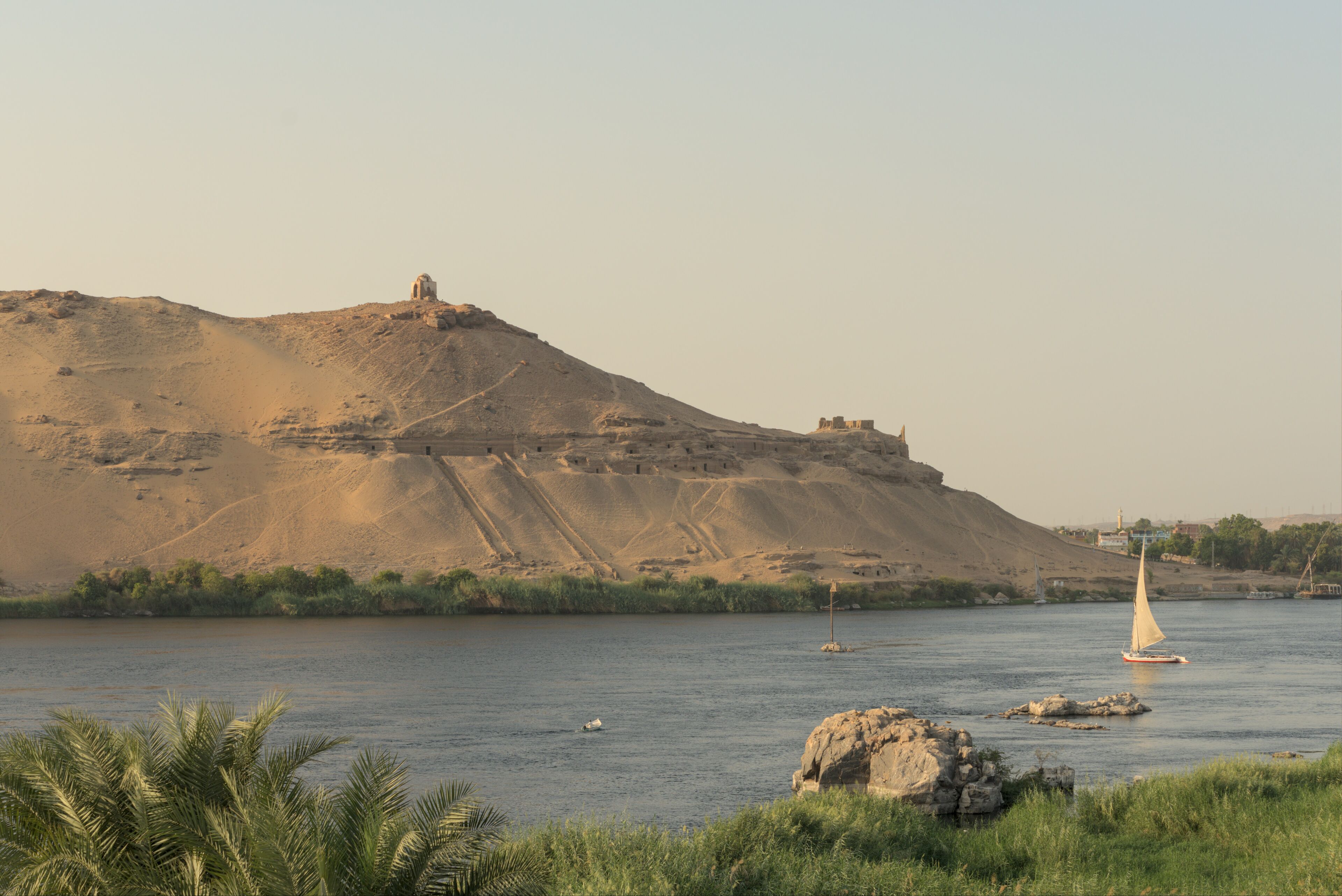
Dome of Abu Al-Hawa
Three of the temples I visited were constructed during the Hellenistic Period of Ancient Egypt (323BC - 30BC). Alexander had brought the empire, and in his wake the Ptolemies established a Pharaonic reign. The capital was moved to Alexandria, and the Ptolemies sat on the shores of the Mediterranean breaking plates and drinking ouzo. As every book I’ve read on the subject summarises: during the Hellenistic Period the Greeks became more Egyptian, the Egyptians didn’t become more Greek. The Ptolemies continued funding the construction of new temples at sites such as Philae, Kom Ombo, and Dendera. Greek influence can be seen in the architecture and construction of these temples, but the imagery and dedications within stayed traditional ancient Egyptian.
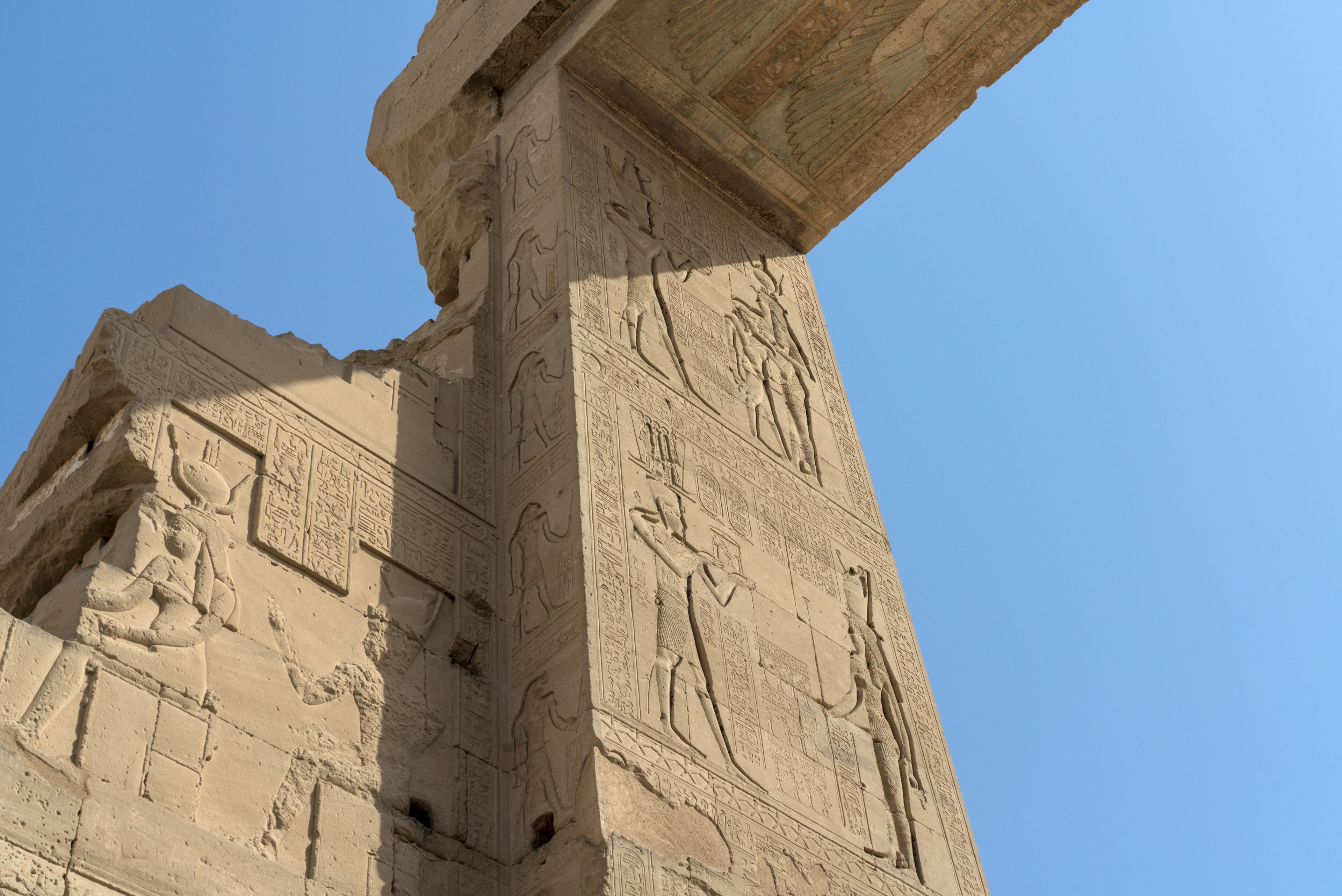
Dendera
Dendera Temple was the highlight of my trip. The amount of material preserved at the site is stunning. The temple still has its roof and the ceilings – something of a rarity as I understand it. In the main hall the ceilings, walls, and columns are intricately detailed. It’s overwhelming. The original blue colour is still relatively preserved, with only relatively minor damage done by jealous Christians (visible below), and later by the Napoleonic Army – dynamiting the Zodiac out of the ceiling and hauling it back to Paris.
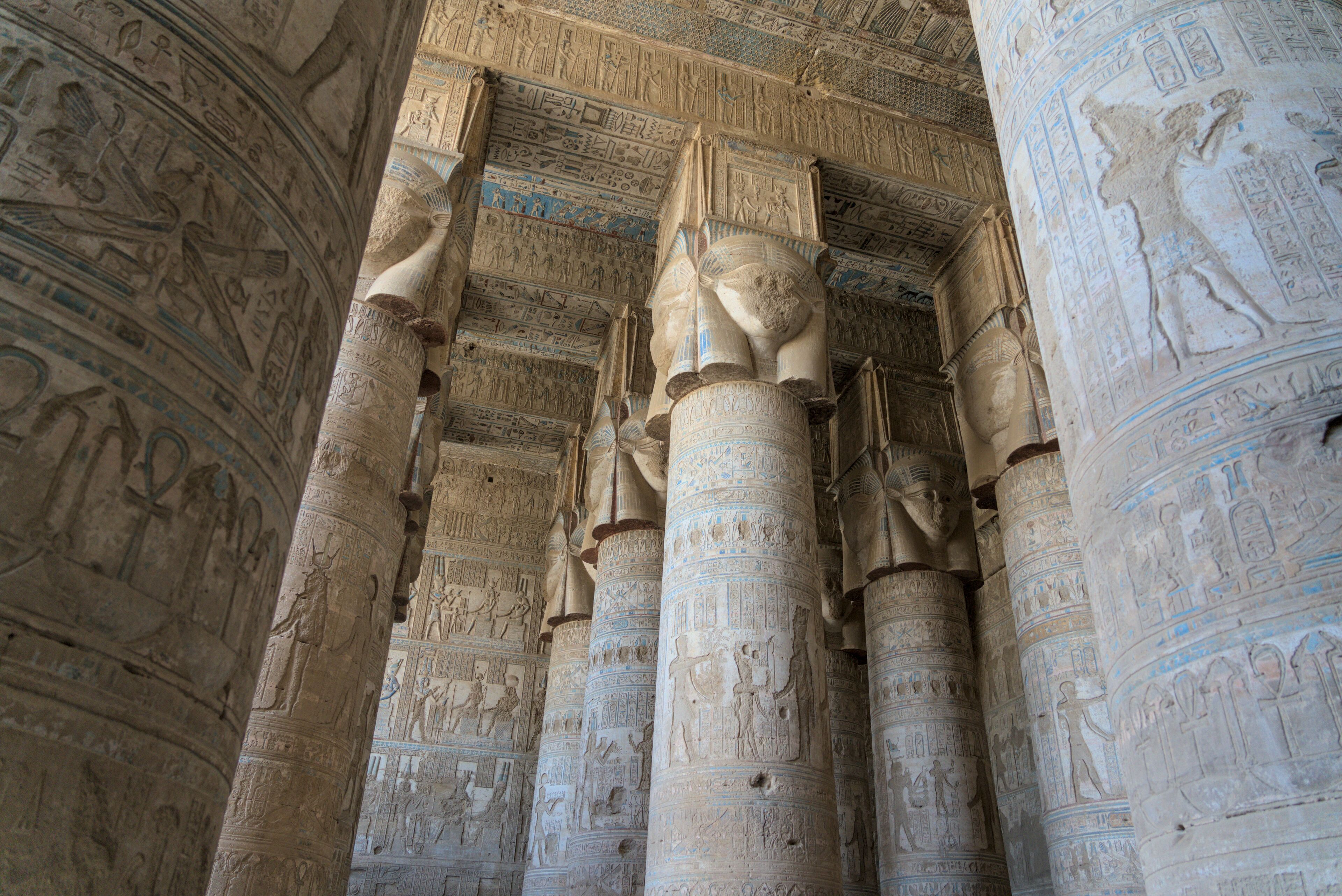
Dendera - Main hall
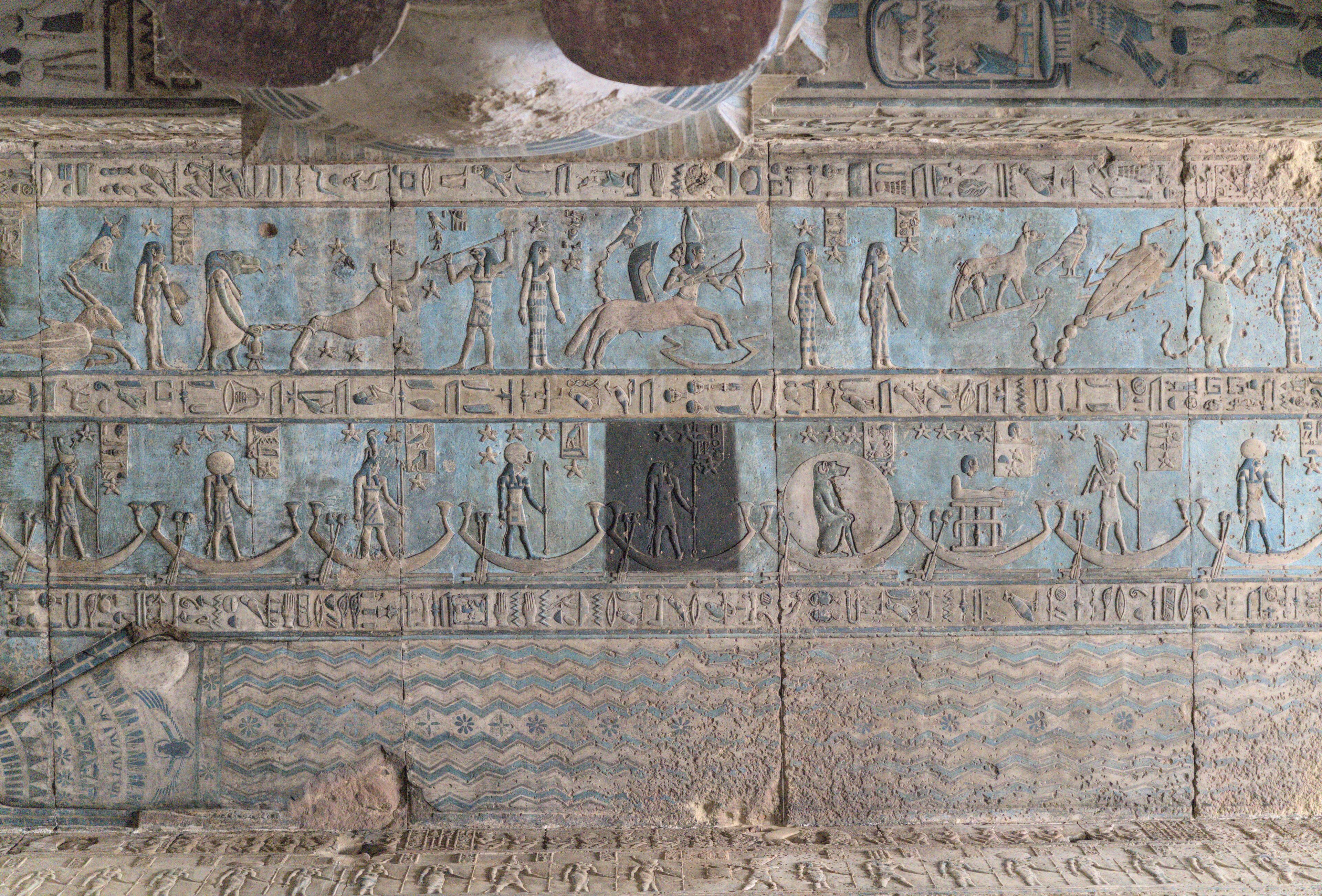
Dendera - Ceiling showing zodiac constellations
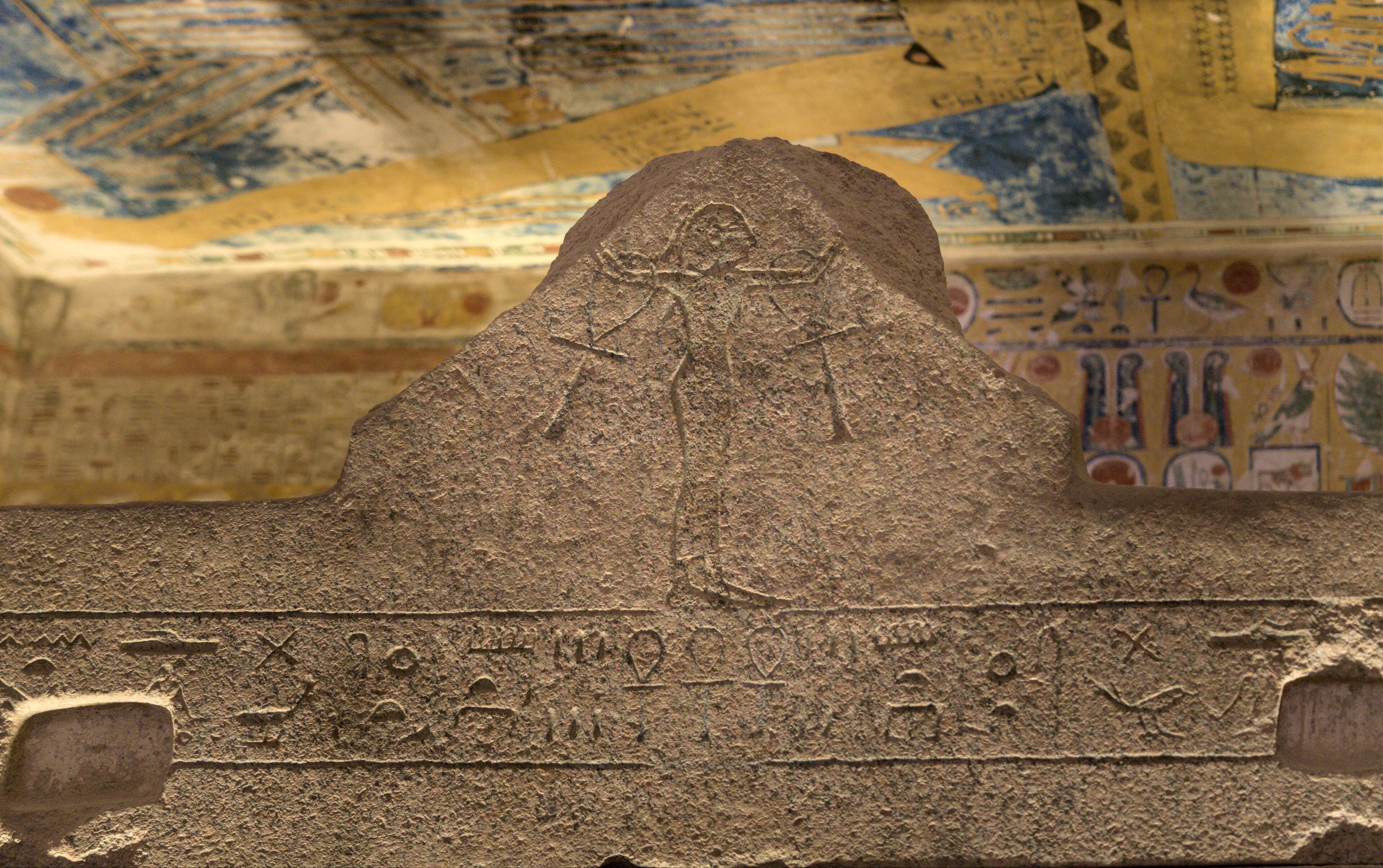
Valley of the Kings - Tomb of Ramses IV
The Valley of the Kings was active during the New Kingdom (1550BC to 1070BC). A Pharaoh would come to power, appoint a gentleman to design and construct their tomb, give them lots of money, wait until they died, go through the mummification process, and then be sealed in their tomb ready to start their second life. At least that’s what they thought the process was. Pharaohs would never visit Valley of the Kings while living, and we’re yet to hear back from anyone about the second life. Grave robbing was also an issue. If the folks who constructed the temple (or their later descendants) needed an extra dollar, then they knew the location of at least one tomb including all of the traps and false doors they needed to defeat in order to grab the loot.
The size of the tomb generally correlates to the duration of the Pharaoh’s reign, whereas the contents and treasures within it would correlate to their wealth. Construction would continue while the Pharaoh was in power. Even if construction finished as per the original design, if the Pharaoh was a live they’d typically continue building additional rooms adding grandeur and indoor-outdoor flow. Once a Pharaoh died the clock was started. Mummification would take forty days, they’d be taken to their tomb, and the tomb sealed. As such, a partially constructed or decorated room within a tomb indicates when the Pharaoh died.
Tutankhamun lived until he was nineteen. His tomb, KV62 has only a few rooms. Contrast this to KV5 containing one hundred and thirty rooms. KV5 was constructed by Ramses II during his sixty six year reign as a tomb for his sons.
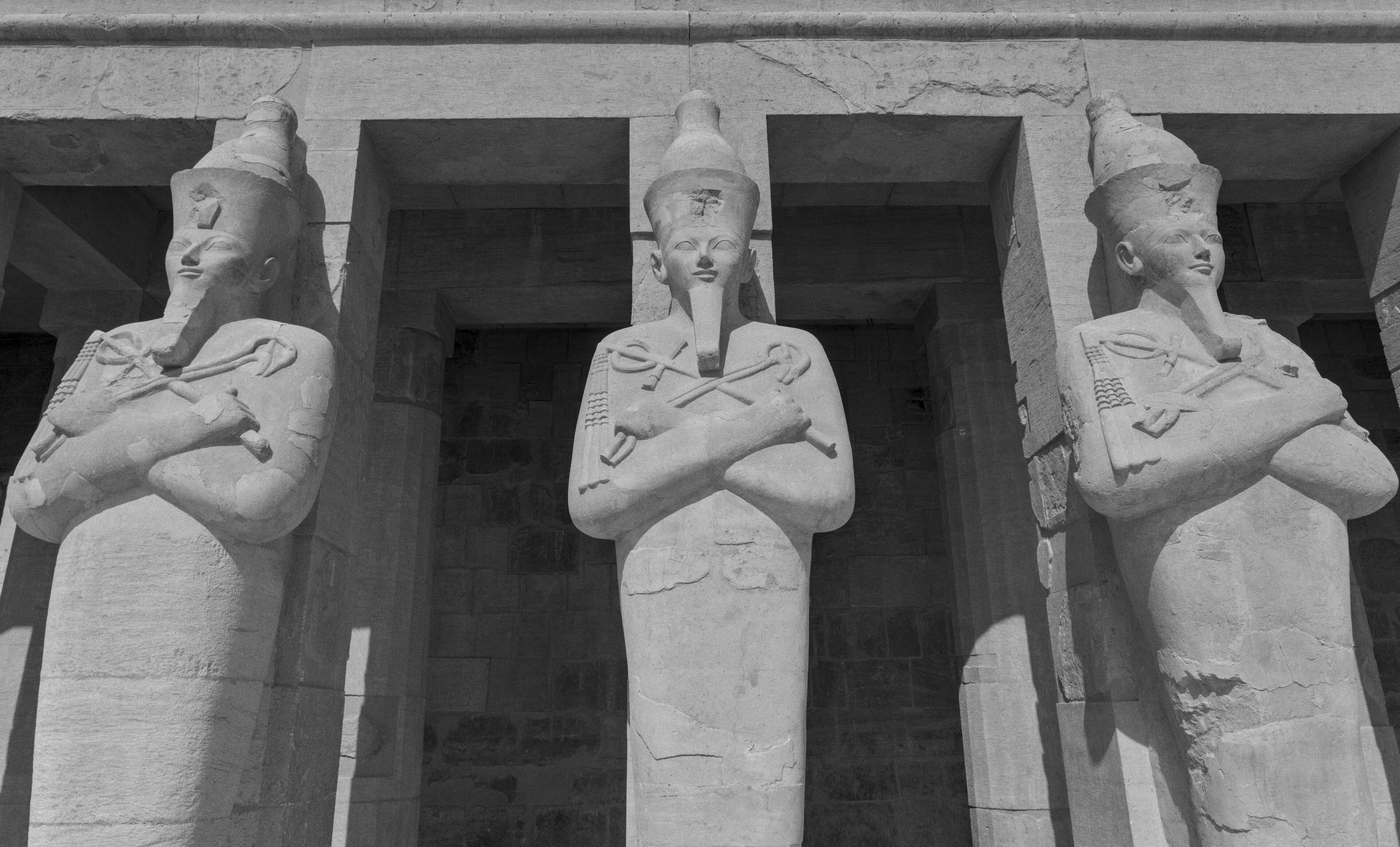
Temple of Queen Hatshepsut
